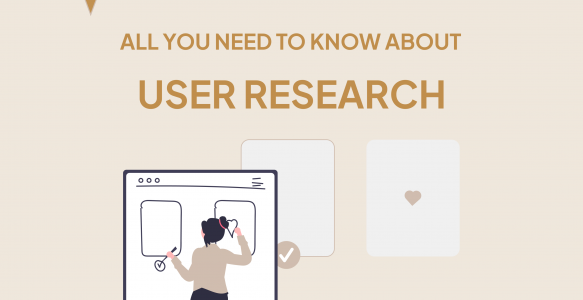Script interview questions
Develop a list of questions that you’ll ask all of the users you interview. It’s considered a best practice to keep interview questions fairly consistent across users, but this list of questions is just a guide. You can deviate from the questions you prepared, if necessary, to learn more about the user and their pain points.
Collect supplies
Create a checklist of items you’ll need for the interview, such as a computer, a printed list of questions, or paper and a pencil. If you’re using new equipment or technology during the interview, make sure you know how it works in advance.
Research the users
Take time to learn what you can about the people you’ll interview. If the users you’re preparing to interview provide their personal information before the interview, be sure to take note of it. This information might include their name, demographic information, relevant experience with the product you’re designing, or details about how they learned about the interview. You can use this information to extend the conversation during the interview and build a rapport. When you work for an organization, you can also screen participants on sites like LinkedIn to confirm they are who they say they are. You wouldn’t want to accidentally interview someone who is working for the competition!
Practice
It’s always a good idea to practice delivering the questions you’ll ask users before you conduct a real interview. This gives you time to make changes to the questions you’re planning to ask and helps ensure that the interviews run smoothly. Practicing is also a good way to determine if the length of the interview is appropriate, or if you need to add or cut questions from your list. You can practice asking interview questions in front of a mirror or with a trusted colleague.
Find research participants
At this point, you’ve determined the goals of the interview, written interview questions, and created a screener survey to find a representative sample of study participants. You’re ready to start recruiting participants! How and where you find research study participants depends on the company you work for, the type of product you’re designing, time constraints for the research, the project’s budget, and the accessibility of target users. Based on these project details, you can choose from a variety of ways to find research participants.
Personal network
As a UX designer in training, your personal network is a great way to find people to interview! Think about family, friends, or colleagues who fit the demographics of the target users you’re designing for.
Existing user base
If you’re conducting research and creating designs for an organization with an existing user base, you’ll likely be able to recruit participants from that group of established connections. This might not be the case for your current project in this program, but recruiting from an existing user base is pretty common in the real world.
Online
Alternatively, if you’re coming up with designs for an imaginary company or a newly established business, the easiest way to recruit participants for your study is online. You can use your own social media to find research participants. Or, there are websites created specifically to connect with research participants, like UserTesting and User Interviews. You can also find online groups that have users with the demographic characteristics that you want to interview. For example, if you’re designing an app for parents, you might find an online group about parenting. Before you post in an online community, make sure to check group rules or ask an administrator for permission to ask for research participation!
hallway testıng
If recruiting participants online doesn’t seem like an option, a less formal way to recruit for your study is to ask people in person. You can use a recruiting method known as hallway testing, which means asking people that pass by in the “hallway” to try the product you’re designing. Try to position yourself in a location where you’re most likely to encounter your product’s target audience, like a dog park or a coffee shop. Hallway testing can be effective if you’re recruiting a small number of participants, if you have limited time, or if you want to conduct research for free. However, finding participants in this way is risky because the people you collect feedback from might not have all the characteristics of your product’s potential users.
third-party recruiting agencies
Some organizations have a budget to hire third-party research recruiting agencies. Recruiting agencies are useful because they save you time and can often reach diverse users.



